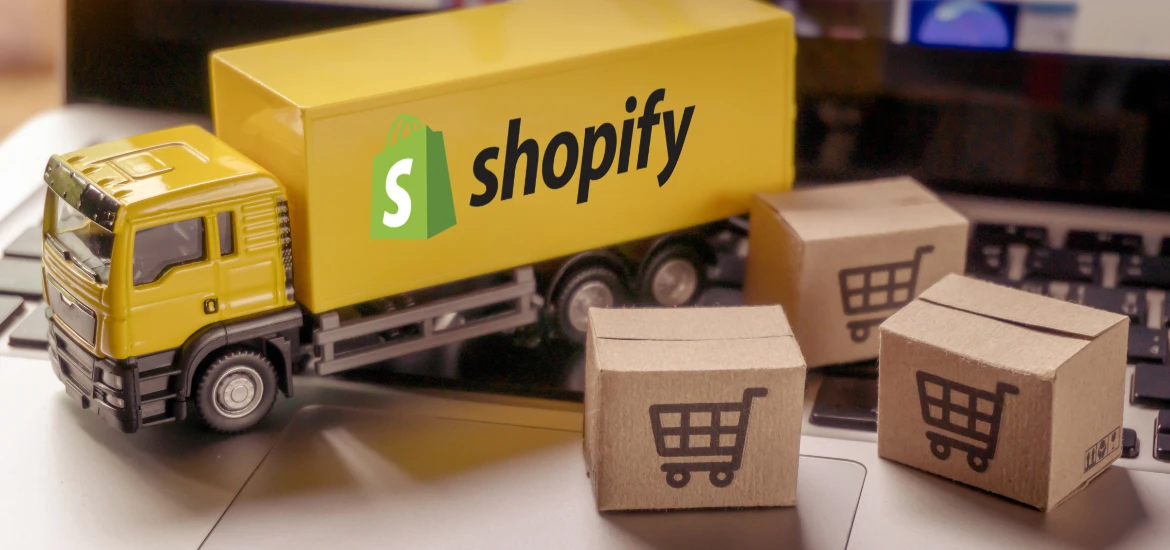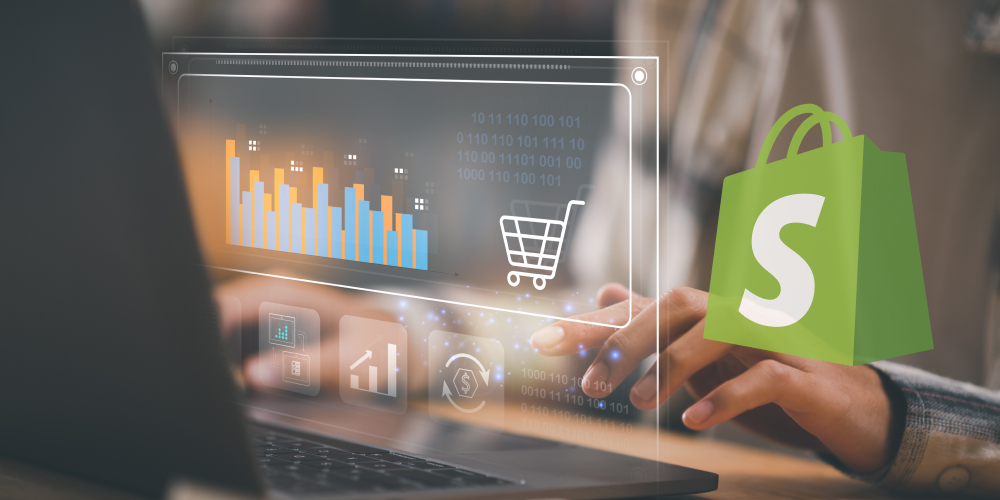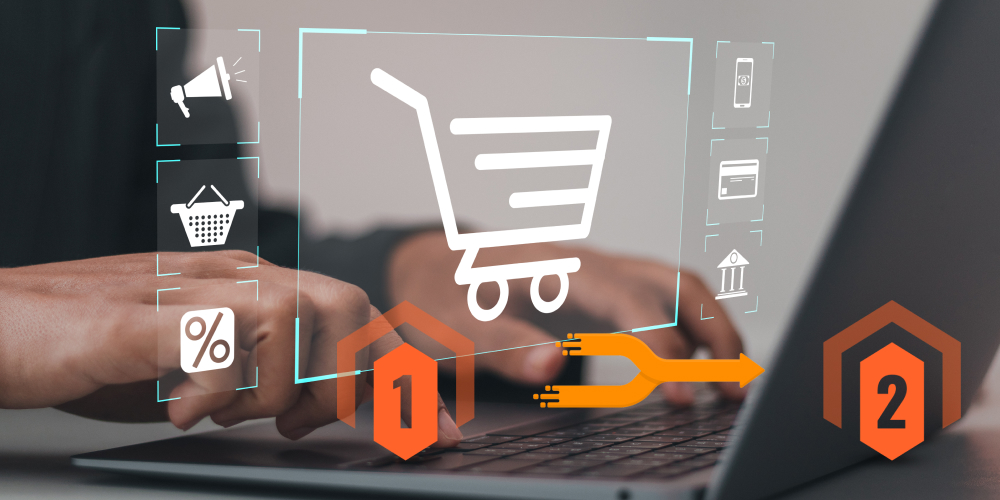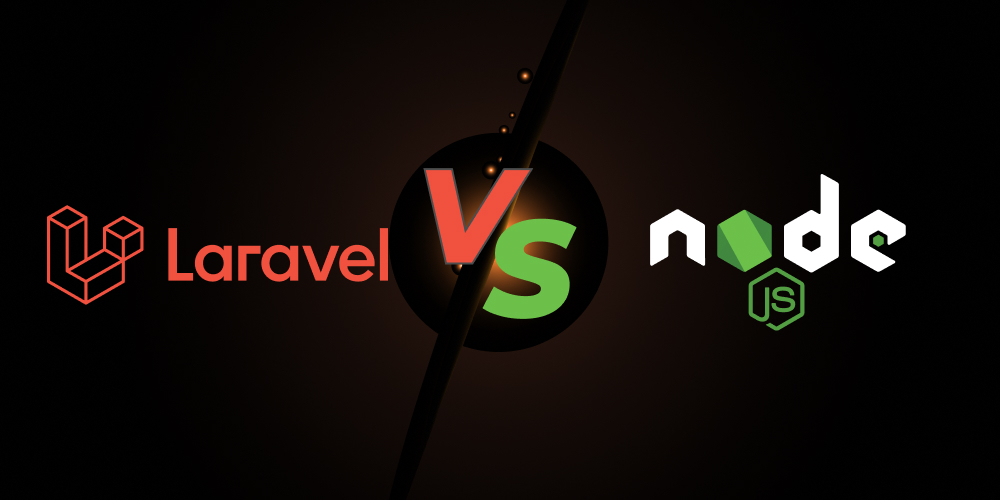You can sell on Shopify without having inventory through dropshipping, affiliate store, print-on-demand (POD), and selling digital products.
Shopify is undoubtedly a massive platform for merchants who want to build or grow their eCommerce businesses. With its features and custom functionalities, merchants can never go wrong. There are several reasons such as not having enough capital or storage issues that merchants must sell without inventory.
In this blog we share the top strategies to sell on Shopify without inventory. Let’s read on this.
Business Models to Sell on Shopify Without Inventory
The common business models that help merchants sell products on Shopify and earn huge income from that platform include dropshipping, POD, digital products, pre-order model, third-party fulfillments and affiliate marketing. Let’s discuss them briefly.
Dropshipping
It would not be wrong to say that dropshipping has become a buzzword. From boomers to Gen Z, everyone is curious about what is dropshipping and how does it work in the world of eCommerce.
Dropshipping is a method of selling products online in which you promote the products and create your storefront online. However, when a customer places an order online on your storefront, you forward the order details to the dropshipper and inform customers that the products are out for delivery. The physical fulfillment of the order is out of your hands and must be completed by the trusted supplier.
Shopify offers various Shopify features like integrated apps such as Oberlo and Printful, which you can leverage to start your drop shipping on Shopify. You can find trending products, import them to your storefront, and deliver them to the customers when they place an order online without having an inventory or merchandise.
Pros and Cons of Dropshipping on Shopify
Even though dropshipping stands as the top business model to sell on Shopify without inventory but in case you want to be aware of the disadvantages, below are some:
| Pros | Cons |
|---|---|
| Low startup costs | Lower profit margins |
| Easy Shopify integration | Limited control over shipping |
| No inventory management | Quality control issues |
| Wide product selection | Longer shipping times |
| Flexible business model | Supplier reliability concerns |
| Global Reach | Limited branding opportunities |
Print-on-Demand
Another top business model to sell on Shopify without inventory is Print-on-Demand (POD). Print-on-demand business model for Shopify enable merchants to print designs and other creatives on white label products such as mugs, shirts, clothing, etc. It gives an ample room to the merchants to get creative and take their business to new heights only by printing superb designs.
Once you have printed the design on the required products, you need to put them on your storefront and share with your trusted print-on-demand supplier so that your items can be delivered. In addition to that, you must have a print-on-demand application integrated with your Shopify store such as Zendrop, Printify, ShineOn, etc.
Here are some recommended print on demand apps for Shopify store:

Pros and Cons of Print-on-Demand
Find the advantages and disadvantages of print-on-demand:
| Pros | Cons |
|---|---|
| No need for storage or warehousing | Higher per-unit costs compared to bulk production |
| Customization options for each order | Limited control over printing and fulfillment times |
| Low-risk product testing | Potential for lower profit margins |
| Quick setup and launch | Limited product selection from print providers |
| Ideal for niche and unique designs |
Affiliate Marketing
If you want to run a no-inventory store on Shopify, then affiliate marketing can be the right choice to make. Before you start to make up your mind for affiliate marketing, make sure that you have got good traffic that can lead to your Shopify store and further can become leads. Having a good customer base is an important part of selling on Shopify without inventory.
In the business model of affiliate marketing, you must get approved by a successful affiliate program such as Amazon Associates, you will need to start redirecting the audience to their product page and get your commission that may vary. Let’s take a look at the pros and cons of selling on Shopify without inventory.
Pros and Cons of Affiliate Marketing on Shopify
The pros and cons of affiliate marketing are as follows:
| Pros | Cons |
|---|---|
| Minimal startup costs | Lower profit margins due to commissions |
| Passive income potential | Limited control over product quality |
| Easy to set up with Shopify apps | Intense competition in popular niches |
| Ability to promote a wide range of products | Commission rates can be low |
| No shipping or logistics involved | Requires consistent traffic to generate sales |
| Flexible product selection | Difficult to build a strong brand identity |
Digital products
Selling digital products is another great way if you want to sell on Shopify without inventory. The built-in feature of Shopify allows merchants to sell on Shopify without having the hassle of backlog, products forecast, and other related things. The popular digital products you can sell on your Shopify store include software, online courses, e-Books, and digital art. The two main factors that highlight with respect to selling digital products on Shopify is that it requires less investment and is also low risk which is why it’s also a competitive domain.
Pros and Cons of Selling Digital Products on Shopify
You can start your business on Shopify without inventory, but it comes with its own advantages and disadvantages. Let’s take a look.
| Pros | Cons |
|---|---|
| No inventory management | High competition in digital products |
| Instant product delivery | No physical product for upselling |
| Low overhead costs | Difficult to stand out without marketing |
| Unlimited scalability | Risk of product piracy or duplication |
| Global reach without shipping costs | Limited to niche markets |
| Easy product updates and revisions | No return customers for one-time products |
| Higher profit margins | Requires technical setup and maintenance |
Third-party Fulfillment Services
If combined with dropshipping, third-party fulfillment services can yield results for the merchants. Third-party fulfillment services or centers are also called 3PL/third-party logistics that manufacturers their own products and send to the fulfillment center for remaining tasks like packaging, shipping, and delivery. Unlike dropshipping, 3PL allows more room for packaging and designing. It must be noted that, if you have just started your Shopify business without inventory then dropshipping can be a good choice. But as the business grows, choosing 3PL would be the right choice.
Pros and Cons of 3PL Services/Centers
Let’s take a look at the pros and cons of third-party logistics for selling on Shopify without inventory:
| Pros | Cons |
|---|---|
| Reduced shipping and logistics workload | Less control over the fulfillment process |
| Access to advanced logistics technology | Reliance on the 3PL’s reliability and efficiency |
| Faster and efficient order fulfillment | Long-term contracts can be restrictive |
| Better inventory management | Service quality may vary across providers |
| Global reach with multiple warehouse locations |
Pre-order Model
Another interesting business model to sell on Shopify without inventory is the preorder model in which customers place an order before it has been fully launched or available on the store. The main benefit of leveraging this model is that merchants can gauge the hype and interest of the customers in the product.
Pros and Cons of Pre-Order Model
Following are the pros and cons of pre-order model:
| Pros | Cons |
|---|---|
| No upfront inventory costs | Uncertain demand forecasting |
| Creates excitement and exclusivity | Potential delays in product delivery |
| Helps with cash flow before production | Difficult to maintain momentum post-launch |
| Gathers valuable feedback before full launch | Requires strong marketing to drive pre-orders |
| Reduces the risk of overproduction | Complex logistics for staggered fulfillment |
Tips for selling without inventory on Shopify
If you decide to work on Shopify using the above business models, then here are some of the quick tips for you to follow:
- Start working on RnD before starting your business. It entails reviewing your competitors, potential audience, trends, pricing, and other key factors that vary from business to business.
- If you are choosing dropshipping, print on demand, affiliate programs including other then make sure that you choose trusted partners that match your business vision. It is essential to inspect thoroughly so that you can deliver quality.
- Make sure that your Shopify store is fully optimized. Shopify has built-in SEO features, but you will always need to improve your store rankings through different strategies such as keyword research, optimized metadata, images, and improved store speed. Hire Shopify experts to optimize your Shopify store with you that exclusively work on your store.
- Are you sharing your Shopify store on social media platforms? Online businesses can expand their reach if they target marketing campaigns on social media with full-fledge plan. Find your target audience and create a better connection with them so that you can build trust in your brand among the audience.
Conclusion
Selling on Shopify without inventory might be low investment in start but in order to be successful you need to be smart. By following the tips to sell on Shopify without inventory, you can stay safe from unprecedented problems for your business. Even if you are running your Shopify store without inventory, make sure that you get technical help when needed so that nothing disrupts customer experience and business operations.
Frequently Asked Questions
Where to get products to sell on Shopify?
You can source products for your Shopify store through various methods, including dropshipping suppliers, print-on-demand services, wholesalers, or creating your own products. Shopify integrates with several apps like Oberlo, Spocket, and Printful that simplify the process of finding and selling products. You can also work directly with manufacturers or purchase bulk inventory from suppliers.
Do I have to buy products to sell on Shopify?
No, you don’t have to buy products upfront to sell on Shopify. You can use models like dropshipping or print-on-demand, where the supplier ships products directly to the customer when an order is placed. This allows you to sell without holding inventory, minimizing upfront costs. However, if you want to sell physical goods, you may need to invest in inventory.












